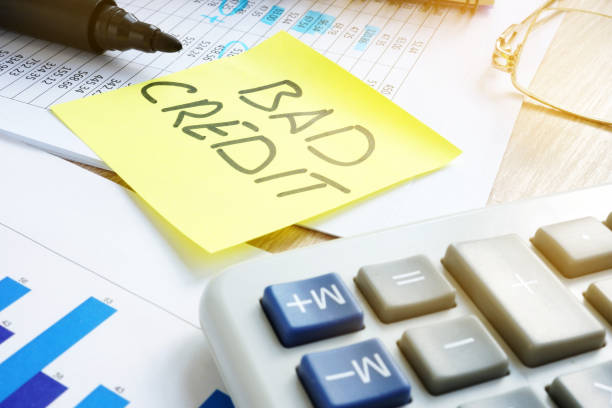Everybody dreams of retirement when you will have time to travel around, spend more time with your family, or just sit back and enjoy your state. Retirement planning is hard, and the right time to start is now. Getting it in place will take some time, but it is worthwhile.
However, it is not easy to live the golden years of your life the way you want if you do not have enough finances. In your twilight years, you may have some medical conditions.
Of course, you will need some money for your medication and treatment. Though you can take out unsecured personal loans in Ireland when you face an unexpected need for money, you can get them only if you have an income source to pay back.
Why is Retirement Planning Important?
Retirement planning is a must as it ensures you will have sufficient funds to get by during your twilight years. In other words, it ensures financial stability after retirement. After retirement, a pension will be your income, and it may not be sufficient to get by – after all, you need money for discretionary expenses as well.
Lack of sufficient cash may force you to borrow money to meet your expenses, but it may threaten your finances resulting in a debt spiral. You will feel like your life is turned upside down. Also you cannot just hinge on your employer’s and your contribution to the state pension scheme.
You will have to take additional steps to ensure financial stability in your retirement age. When you put in extra effort to save money for your golden years, you will be able to live your retirement life the way you want.
Tips for Creating a Retirement Planning
You have understood the importance of retirement planning, and now you should know how to plan for it.
1. Figure out your Retirement Timeline
Before you start creating a retirement fund, you should figure out your retirement timeline. A longer retirement timeline will put less pressure, and a shorter timeline will put more pressure on creating a retirement fund. If you have an extended period to retire, for instance, more than a decade, you are in a favorable position to take on the risk. For instance, you can invest money in riskier assets that promise to yield higher returns.
Even if you lose money on them, you have an opportunity to recover that loss. However, if you do not have enough time left, you should prioritize saving money instead of investing. If you want to grow your funds by investing money, you should invest in diversified assets. Investing all of your money into riskier assets is not recommended to get a higher return because you may lose all your money when the market fluctuates.
With a diversified investment portfolio, you can grow your retirement fund quickly. The value of money keeps going down due to rising inflation, and you can offset its impact only with the help of investments. If you are reluctant to invest money, you should focus on safer options like a fixed deposit. You can buy it and renew it every year, so you keep earning interest. Carefully evaluate your options based on your current financial condition and retirement timeline.
2. Create a Spending Budget
Budgeting is an integral aspect of the retirement plan. It will not work unless you know how much money you will need for your expenses during your twilight years. You cannot get to know the actual living cost based on your current spending. You can determine the estimated figure.
Your retirement budget will include living costs, discretionary expenses, and other expenses that you may come up with during your retirement life, such as medical expenses. Many people think that their needs will decrease at that time, so the budget does not need to be bigger, but the fact is that you will need more money.
You do not know how much you will be paying on medical bills. Further, the living cost will be higher than now because of rising inflation. While creating a retirement budget, it is imperative to consider these factors. Have a separate account for your retirement budget. You should be able to contribute to it from your income without compromising with an emergency cushion. Do not dip into the retirement funds, so you manage to build it by the time you retire.
3. Choose different Retirement Accounts
Now you have created a budget, and you know the retirement timeline. The next step is to choose retirement accounts. There are two types of retirement accounts: standard PRSA and non-standard PRSA. It is a long-term personal pension plan that allows you to stash away money for your retirement in a flexible way.
You can use this account even if you switch employers, or you can shift to another PRSA without any additional fees. You can pick either standard or non-standard PRSA. In both accounts, you are entitled to get tax relief, but charges are not capped for the latter, and the types of investments are restricted in the former account.
It is crucial to note that the amount you will get at retirement depends on the size of your contribution and the performance of your investments. Further, charges levied can whittle down your balance. You should take note of these factors before deciding on the type of retirement account.
4. Hire a Financial Consultant
Retirement financial planning takes a lot of deliberation. If you do not take a step wisely, you will end up ruining your retirement budget. If you do not want to take on unnecessary stress about it, hire a financial advisor.
They can frame an effective strategy using their extensive knowledge and discuss investments you should consider to make money and tax benefits. They will also help you with debt settlement. Whether you have a lot or little time left to retire, they will go through each aspect of your financial condition and then come up with an effective strategy.
Conclusion
Retirement planning is actually tough, but with due diligence, you can save sufficient funds for your twilight years. Estimate how much money you will need for your living expenses. Do not forget to consider additional expenses like medical bills.
Although you think you will be able to stow away sufficient cash. The fact is you may need more money when emergencies arise. In that situation, you can take out a loan with bad credit in Ireland. However, your retirement budget must have the scope for dealing with debts at that time. Consult a financial advisor so they can frame the right strategy after knowing your needs and financial situation.

Hudson is a graduate of banking and finance and works as a financial consultant at MyLoansBoat. He has a professional qualification to counsel people about money management. At MyLoansBoat, his key duties include shortlisting applications of borrowers and counseling them about credit score improvement, building an emergency cushion, retirement funds, and getting rid of debt. He is an ardent reader of finance books and uses the gained knowledge to help people with their finances. He also writes for the company’s blog on various topics like budgeting, investing, saving, debt management, joint finances, and the like. His aim is to dedicate his life to helping people have a debt-free life.






